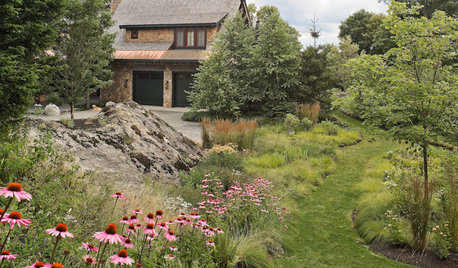How to keep my echinacea true
brandymulvaine
15 years ago
Related Stories

BATHROOM DESIGNGive a Traditional Bathroom True Polish With Accessories
As lovely as they are practical, these bathroom accessories have a classic look but keep modern needs in mind
Full Story0

HOUSEKEEPING10 Things Neat Freaks Know to Be True
Do you err on the incredibly tidy side? Then you probably already live by these nuggets of neat wisdom
Full Story
DECORATING GUIDES6 Extraordinary Collections Show True Passion
Love of cars, toys, watches and more finds grand and fearless expression in these homeowners' incredible display spaces
Full Story
LIFE10 Things Night Owls Know to Be True
Love being up while the world slumbers? Prefer a really late bedtime to an early night? These observations on night owl life may ring true
Full Story
LIFETrue Confessions of a House Stalker
Letting go when a new owner dares to change a beloved house's look can be downright difficult. Has this ever happened to you?
Full Story
FUN HOUZZ31 True Tales of Remodeling Gone Wild
Drugs, sex, excess — the home design industry is rife with stories that will blow your mind, or at least leave you scratching your head
Full Story
COLOR12 Tried-and-True Paint Colors for Your Walls
Discover one pro designer's time-tested favorite paint colors for kitchens, baths, bedrooms and more
Full Story
MOVING9 Things New Homeowners Know to Be True
Just moved into a new home? Congratulations! The fun is about to begin
Full Story
MODERN ARCHITECTUREHouzz TV: This Amazing Lake House Made a Couple’s Dream Come True
Step inside a dream home on Lake Austin, where architecture celebrating gorgeous views has a striking beauty of its own
Full Story
GARDENING GUIDES13 Risks to Take for True Garden Rewards
Go ahead, be a rebel. Breaking rules in the garden can lead to more happiness, creativity and connection with the earth
Full Story





remy_gw
brandymulvaineOriginal Author
Related Professionals
Lowell Landscape Architects & Landscape Designers · Lees Summit Landscape Contractors · Mount Kisco Landscape Contractors · Newnan Landscape Contractors · Pikesville Landscape Contractors · Ponte Vedra Beach Landscape Contractors · West Haverstraw Landscape Contractors · Kingsburg Landscape Contractors · Boone Roofing & Gutters · Cedar Rapids Roofing & Gutters · Danbury Roofing & Gutters · Fairfax Roofing & Gutters · Marietta Roofing & Gutters · Seguin Roofing & Gutters · New Orleans Roofing & Guttersremy_gw